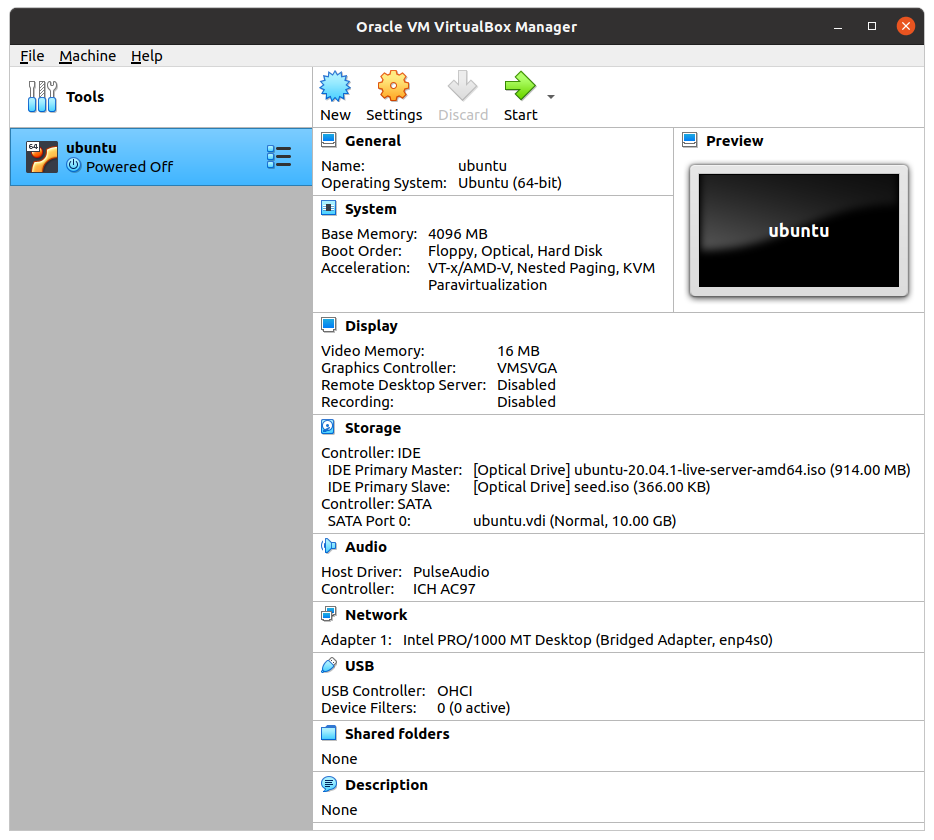
Host-to-guest communication and internet access are available.

The VM gets an IP on the same network that the host is physically connected to.
 Bridged – with this mode VirtualBox uses a special driver for the host’s physical network interface to create a virtual network interface for the VM. This gives internet access but applications running on the host can’t make network connections to the VM. NAT – the networking mode of the default network adapter when you create a new VM. You can read all about the various networking modes here but here’s a quick summary: and then add a host-only network adapter and configure the VM with a static IP address (for host-to-guest access)Ī quick word about VirtualBox networking modes. with the default NAT network adapter (for internet access). In summary, the approach I’ll give here is to create a VirtualBox VM: It turns out that getting this set up is not so trivial, but also, it’s not that hard once you know what VirtualBox provides and how to configure it. That means I need Django running on my laptop to be able to access the VM (host-to-guest access) and the VM does need to be able to access the internet (guest-to-internet access) since the Ansible playbooks that are executed against the VM download and install software from the internet. The goal is to have a locally running instance of Airavata that I can connect to when developing the Airavata Django Portal which I’ve been working on. Recently I’ve been working on installing Apache Airavata in a VirtualBox VM running on my laptop using our “standalone” Ansible installation settings.
Bridged – with this mode VirtualBox uses a special driver for the host’s physical network interface to create a virtual network interface for the VM. This gives internet access but applications running on the host can’t make network connections to the VM. NAT – the networking mode of the default network adapter when you create a new VM. You can read all about the various networking modes here but here’s a quick summary: and then add a host-only network adapter and configure the VM with a static IP address (for host-to-guest access)Ī quick word about VirtualBox networking modes. with the default NAT network adapter (for internet access). In summary, the approach I’ll give here is to create a VirtualBox VM: It turns out that getting this set up is not so trivial, but also, it’s not that hard once you know what VirtualBox provides and how to configure it. That means I need Django running on my laptop to be able to access the VM (host-to-guest access) and the VM does need to be able to access the internet (guest-to-internet access) since the Ansible playbooks that are executed against the VM download and install software from the internet. The goal is to have a locally running instance of Airavata that I can connect to when developing the Airavata Django Portal which I’ve been working on. Recently I’ve been working on installing Apache Airavata in a VirtualBox VM running on my laptop using our “standalone” Ansible installation settings.








